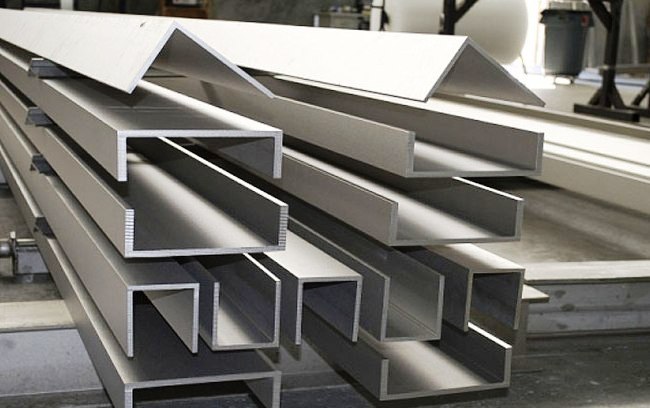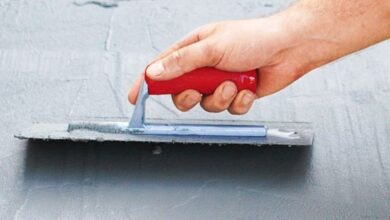5 Types of Steel Used in Construction

Steel is used in building in a variety of forms; it’s not just limited to common materials like structural steel. Steel products are among the most resilient materials available; they can be used for countless purposes and endure up to 50 years in building and construction projects.
Flanges, angle bars, steel sheets, pipes, channels, corrugated roofing, sheet piles, and similar items are a few of these products. On the other hand, some construction steel products are made to shape and cut various materials. Tool steel is one example, which is harder and has a higher tensile strength than pipes. Other varieties include stainless steel, alloy steel, rebars, and similar materials. To find out more, keep reading.
Which varieties of steel are used in construction?
- Rebar made of steel
- Steel alloy
- Stainless steel
- Steel tools
- Mild steel
- Rebar made of steel
The product known as steel rebar is typically installed as a component of a building’s foundation and comes in rod form. The unique rebar design, with its threads and other symmetrical patterns, is intended for use in concrete applications.
For the construction of bridges, foundations, or any other concrete-based structure, bare concrete is not very effective. This is brought on by the material’s propensity to expand and fracture, particularly at high pressure and temperatures. Because of its lack of flexibility, it can break when bent.
Steel rebars are used to reinforce concrete because of this. They can be used in concrete bridge decks, wall paneling, columns, and building foundations. In addition to increasing the concrete’s flexibility, the steel rebars reduce the amount of concrete required.
Steel Alloy
Alloy steel, as the name implies, is steel that has undergone metallurgical fusion with silicon, manganese, nickel, molybdenum, chromium, or other metals. Usually, this is done to increase the non-alloy steel’s hardness, tensile strength, malleability, machinability, or resistance to corrosion.
For instance, there aren’t many advantages to pure manganese metal. Because manganese in its pure form tends to be brittle, it is typically used to lessen the amount of wear and tear on steel. In contrast, nickel is combined with the mineral copper to make coins. However, it’s also useful in manufacturing alloy steel as it helps improve steel flexibility and weldability.
Alloy steels are employed with other steel materials for both aesthetic and practical purposes. They can be found in automobile chassis, bridges, tall buildings, and even concrete reinforcing materials.
Stainless steel
Stainless steel is a subtype of alloy steel, distinguished by the presence of chromium, a naturally occurring metal in the environment. The steel has non-oxidative and non-corrosive qualities due to its chromium content, which makes it appropriate for a variety of applications.
Although more stainless steel products fall in the upper range, the typical range for the chromium content of stainless steel is 10% to roughly 18%. In light of this, stainless steel is superior to materials like wood for a variety of reasons.
For example, stainless steel is applied in building cladding, railing, agricultural enclosures, roofing materials, trusses, and building framing. It doesn’t rot when exposed to humid environments, in contrast to wood. Because of its exceptional fire resistance rating and non-combustibility, it also aids in better limiting the spread of fire. Because of their minimal need for upkeep and repairs, they also offer an affordable alternative for various projects.
Steel Tool
As previously stated, tool steel is a particular kind of steel product that is used to precisely shape various metals and alloys. To make the tool better for any cutting, fabricating, bending, or machining purposes, tool steel typically has a higher strength rating than your typical steel pipe.
Another way that tool steel can be used is as a tooling die with a definite cross-sectional shape. Here, heated alloys are extruded to create mullions, structural sections, window frames, building profiles, and a host of other products.
Tool steel is used in extrusion operations, but it is also utilized in machine parts for metal stamping, punching, and pipe bending. Compared to the metal specimen that is being modified, they are less flexible and far more robust, with no intention of breaking.
Tool steel can be further divided into groups based on the required temperature. Additionally, they are mixed with other metals that, in their pure forms, are not totally beneficial.
Gentle Steel
In contrast to stainless steel, mild steel typically contains less chromium. They may therefore be more susceptible to various types of oxidation and corrosion.
Consider mild steel as a product that falls between tool steel and stainless steel in terms of value. Although it isn’t quite robust enough to withstand chemical alterations, it works perfectly for applications requiring building and structural support.
Various mild steel products have carbon contents ranging from 0.05% to 0.25%. If the steel product is higher than this range, it can already be categorized as cast iron. Mild steel lacks a lot of trace elements and metals needed for alloying, in contrast to alloy steels. Nevertheless, it is unquestionably less expensive than stainless steel, which is thought to be the most expensive type of steel and has thicker walls.
Important Learning
You now know the five types of steel that are used in construction thanks to this brief guide. These include steel reinforcing bars, alloy steel, tool steel, mild steel, and stainless steel. Even though they may all have comparable qualities, their features, costs, and applications differ significantly.
Using these materials in combination is the best use for them. Without sacrificing the design, they can increase the structural soundness and durability of any building project.

